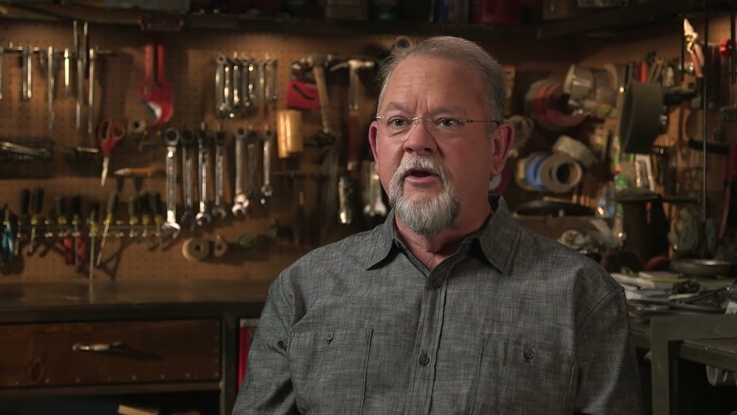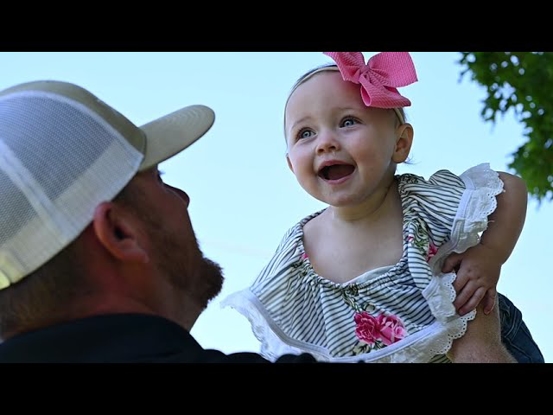Avery Sickels
- Author: Avery Sickels
- Date Submitted: Jun 8, 2013
- Category: Miracle Stories

One afternoon, 5-year-old Avery Sickels was running carefree, her cascading blonde curls swirling in the spring breeze, in the comfort of her backyard in San Angelo. Fast forward 24 hours, and she was in lying in a hospital bed in Fort Worth recovering from a spinal tap, bone marrow biopsy and surgery for a chemotherapy port.
"I was just in shock; I couldn't move," says Avery's mom, Amanda Sickels. "I had no idea when Avery started to get sick that the diagnosis would be leukemia. It was March, and since winter was just over, I didn't think much about her being pale because we hadn't been playing outside. It's one of the symptoms, but it didn't throw a red flag."
Avery's parents also noticed she was tired when she came home from school, but attributed it to the long routine of a typical school day.
"Amanda noticed Avery had some swollen lymph nodes in her neck, but she wasn't complaining about feeling sick," says Michael Sickels, MD, Avery's dad and a radiologist at Shannon Clinic. "Being a doctor, I thought, 'Let's just give her a few days; maybe she has a virus and it will go away on its own.' But Amanda got nervous and thankfully went ahead and scheduled an appointment with the pediatrician."
At the time, several kids at Avery's school had mono, so her mom thought that might be her diagnosis. Amanda gives credit to her "mom gut" for scheduling the doctor appointment that would change their family's life.
Along with swollen lymph nodes in the front and back of her neck, Stephen Sawyer, MD, Avery's pediatrician, noticed the same occurrence under Avery's armpit and on her groin. She also had an enlarged liver and spleen. Blood work was ordered, and he informed Avery's mom that a number of things could be going on with her daughter—including leukemia.
The family waited for results from the blood tests and an answer to what was happening with their vibrant daughter, who had only been sick a handful of times since birth.
"When I viewed the results of Avery's blood test, she had a low white blood cell count; low hemoglobin, meaning she was anemic; and a low platelet count," Dr. Sawyer recalls. "If all three different cell lines are really high or really low you worry about some form of a bone marrow disease. I then had Dr. Mims, a pathologist, look at Avery's blood sample under a slide, and there was not any evidence of what we call blasts, or immature cells. But, with all three cell lines being down I called the hematology/oncology department and told them I was concerned about leukemia. They agreed."
Dr. Sawyer walked over to Dr. Sickels' office to inform him of the diagnosis and that the family needed to take Avery to Cook Children's in Fort Worth immediately.
"By the time they reached the hospital, around midnight that night, Avery already had circulating blast cells in her system," Dr. Sawyer says. "She was very lucky, because within the next day or two she would have become very sick and been in what we call 'blast crisis.' With leukemia, the bone marrow is producing immature white blood cells, called blasts. If it produces too many and they get into the blood supply, your body cannot handle it—it can be life-threatening. It was very lucky we got her up there on that day."
Back at home, Amanda began packing bags for the family's trip to Fort Worth while trying to wrap her mind around the news her husband had just shared.
"It just didn't make sense to me," she says. "Mike was telling me they think Avery has leukemia and we needed to pack some bags and go tonight, but she was outside running around in the backyard. I just didn't understand how she was that sick. I was in shock."
Avery's diagnosis was especially astounding because three months earlier she had a perfect checkup at Dr. Sawyer's office. It was hard for her parents to tell she had lost six or eight pounds during that short amount of time because of her tall, slender build coupled with the fact that she had been a healthy child up until that point.
"In retrospect, we thought maybe she had been a little more run-down than usual and maybe it wasn't just due to school and the cold weather and riding the bus," her dad says. "But it was so hard to tell. She had a regular checkup in December and everything was fine, and then in March she had leukemia. That's how fast it happened."
A family friend, Jessica Fulks, offered without hesitation to keep Cali, Avery's 3-year-old sister, while the family headed to Fort Worth. During the drive to the hospital, Amanda tried her best to answer her daughter's questions about where they were headed.
"I didn't want Avery to be scared, because she didn't even like to go to the doctor for a regular checkup," Amanda recalls. "She just kept asking where we were going, and I tried to give her fun details without explaining too much. But because her dad works in the hospital, she knew immediately where we were when we pulled up. She asked why we were there. I told her she was very sick, even though she didn't feel sick, and they were going to do some more tests and find out how to make her better."
Upon arriving at Cook Children's, Avery was admitted to the ER and placed in a room around 5 a.m. The family had been up for 24 hours and had spent five hours traveling to the hospital. They were exhausted and reeling from the news when the oncologist came into Avery's room. He informed them that their daughter's condition was precursor B-cell acute lymphoblastic leukemia (ALL). Before noon that day, 5-year-old Avery underwent a bone marrow biopsy, spinal tap, blood transfusions and surgery to place a chemotherapy port for her treatments. With all of this under her belt, Avery could begin her long road to recovery, which started with 27 more days in the hospital.
"I just remember trying to get some details, and the oncologist was very good at explaining everything to us," Dr. Sickels recalls. "He told us they thought there was a 97 percent cure rate. Then I asked about the treatment because I had no idea how long it was. He said 2and a half to 3 years, and that just floored me. It just seemed like forever."
The first phase of Avery's treatment, the induction phase, was very aggressive. During this phase, three or four chemotherapeutic drugs are administered at once, infusions are received once a week, and steroids are given daily. Avery also underwent intrathecal chemotherapy, in which the chemo is placed directly into the spinal fluid. She had to fight through this intense therapy in order to be put into remission.
"The first nine or 10 months of Avery's treatment did seem like forever because she had to go back and forth to Fort Worth," Dr. Sickels says. "Amanda had to do all that because I had to keep working. Avery kind of shut down, she was confused and irritated, and some of the medicines and steroids made her grouchy. To put in perspective how bad she felt: She had her sixth birthday during that time and people were bringing her presents and she didn't open a single thing."
After the induction phase was complete, Avery began the consolidation phase of treatment. Beginning in late summer, she entered maintenance chemotherapy and started receiving treatments at Shannon. Children's Miracle Network provided the funds for the pediatric infusion clinic and a Cook-qualified nurse, so Avery, and other children who need chemotherapy, can stay home and still receive proper care.
"Her being able to get chemo and see her oncologist at home is great," her parents say. "Some of the treatments are very brief, so to have a five-hour trip one way and an overnight stay for a 15-minute infusion is pretty taxing on everybody, especially now that she's back in school. Now, depending on her treatment, she can go to Shannon, receive the treatment and then go back to school that afternoon. She also sees her oncologist from Fort Worth once a month and through telemedicine checkups. It's amazing."
Everything was put on hold the day Avery and her parents traveled to Fort Worth. She never returned to her kindergarten class at Lamar Elementary but kept in touch with her classmates and her teacher, Amanda Keenum, through FaceTime and video chat. She received homebound schooling, because her fragile health kept her away from the classroom setting. She was right on track with the students in her first-grade class when she returned to school in January.
Students and staff members at Lamar showed their support for Avery with Team Avery T-shirts.
"Every Thursday, the day Avery would drive to Fort Worth for her treatments, our entire class would wear their Team Avery shirt," Keenum says. "Amanda would pull up outside of the school and we would all come out in our shirts and wave at Avery or sing and dance. It turned into a school-wide movement, other kids and staff members were wearing the shirts and those that didn't have a shirt would wear pink on Thursdays. She has so much strength in her. She just sparkles and has so much joy."
The family cannot express enough thanks for all the support they have received during this time. Amanda refers to their support system as "family" because they have been more than friends and a part of their family through this time. They are amazed by the love people have shown and how big their hearts are.
"I would have taken all this for her in a heartbeat," Amanda says. "She's grown so much during this time. She didn't let it bother her when she started losing her hair. One night, she was staying up late with me and she just asked me if I could shave her head. It was so hard, but good at the same time. She was fine with it. She and her dad had the same haircut for a while."
In addition to her maintenance treatments, Avery takes a pill every morning and steroid medication every four weeks. She is well on her way to a full recovery. There have been a few times the family has gone to the ER because of a high fever, but Avery hasn't had any other complications.
"Because of the funding from CMN, the ER has the special equipment needed for children with leukemia," Amanda says. "There are certain needs that vary from other patients. It's comforting that the staff is trained to know how to handle a child with leukemia."
The Sickels family wants their daughter to remember this time in her life, but not because of all the pain and days in the hospital. They hope Avery is able to embrace everything she has endured and use her courage and strength to share her story with others in need.
"Every step of the way, she conquered it exactly the way you would hope," they say. "She never had any setbacks and progressed wonderfully. She just keeps getting better every day."


